Sensors already equip a range of tools to enhance monitoring capacity for conservation. Some of the higher bandwidth technologies, like camera traps and acoustic monitoring systems, have been essential elements of the conservation toolkit for decades, and thus have enough users that we've created dedicated WILDLABS groups to address them. But a whole range of lower bandwidth sensors beyond these core technologies are being increasingly integrated into conservation monitoring systems, and offer rich new insights into the wildlife and ecosystems we're all working to protect. As with many technologies, cost and access have historically been challenges to the adoption of new sensors, but with low-cost and open-source solutions on the rise, we're excited to see what the future of this space holds.
Getting Started with Sensors:
- Watch Shah Selbe's Tech Tutors episode on scaling FieldKit, an open-source conservation sensor toolbox, from a project to a successful conservation tech product.
- Check out our Virtual Meetup about Low-Cost, Open-Source Solutions in conservation tech, including a talk by Alasdair Davies on the Arribada Initiative's work with thermal sensors in early warning systems.
- For a more in-depth introduction, watch the first video in our datalogger mini-series: Freaklabs: How do I get started with Arduino?
In this group, you'll meet others who are using and innovating diverse sensors in their work, discuss ways to make sensors more effective & accessible for conservationists, learn about what sensors are already helping us accomplish in the field, and have the opportunity to ask and answer questions. Join this group to get started!
Header image: Emma Vogel, University of Tromsø
No showcases have been added to this group yet.
Software Engineer, Web Developer, Tech Enthusiast. I am software engineer with a background in instrumentation, primarily developing using C/C ++. Skilled in web development, with a Grad Cert in Web Development. Enjoy experimenting with tech, e.g. Raspberry Pi, Arduino and IoT.
- 0 Resources
- 0 Discussions
- 7 Groups
Natural Solutions
Computational ecologist - Engineer at Natural Solutions (France)



- 0 Resources
- 1 Discussions
- 13 Groups
- @UrsusAmer66
- | He/Him
Research Ecologist focused on human disturbance and ecophysiology
- 0 Resources
- 0 Discussions
- 5 Groups
- @avilabon
- | He/Him/His
My name is Albert Vila, and I have a multidisciplinary background in earth sciences, design, and technology. I hold degrees in Environmental Sciences, GIS, Bioarchitecture, and Emerging Futures Design. My work focuses on biodiversity, natural areas, and technology.
- 0 Resources
- 0 Discussions
- 5 Groups
Ol Pejeta Conservancy
Endeavoring to implement tech solutions for conservation.



- 0 Resources
- 18 Discussions
- 11 Groups
Liverpool John Moores University
Sensors, remote sensing, embedded systems, Drones
- 0 Resources
- 1 Discussions
- 7 Groups
Wildlife Drones
Wildlife Drones has developed the world’s most innovative radio animal-tracking system using drones so you can track your radio-tagged animals like never before.


- 18 Resources
- 8 Discussions
- 31 Groups
University of Suffolk
Sustainability Researcher • Environmental Data Scientist & Technologist • Earth Scientist
- 0 Resources
- 0 Discussions
- 13 Groups
- @tutgut5
- | she/her
- 0 Resources
- 7 Discussions
- 8 Groups
Key Conservation



- 2 Resources
- 19 Discussions
- 8 Groups
Durrell Institute of Conservation and Ecology (DICE), University of Kent
Conservation Science PhD student at DICE, Kent. I am a GIS and remote sensing enthusiast as well as researcher. Been in love with the interaction between AI and conservation ever since I picked up a python crash course book out of curiosity during my undergraduate degree.
- 0 Resources
- 0 Discussions
- 12 Groups
- @pchwalek
- | He/him/his
I'm a PhD candidate in the Responsive Environments Group, working on electronic systems for human and wildlife monitoring.



- 0 Resources
- 18 Discussions
- 9 Groups
As we launch our new Sustainable Fishing Challenges group in the WILDLABS community, we are excited to welcome Daniel Steadman, the group manager, to give us an overview of three major areas in which #tech4wildlife...
4 August 2020
In this case study from herpetologist Emily Taylor, we learn about the best methods and gear used to track snakes, lizards, and other reptiles and amphibians via radio-telemetry, and how these techniques have changed...
31 July 2020
What is it like to track endangered species using drones? In this blog post from Wildlife Drones, Dr. Debbie Saunders travels to New Zealand to track the Kākāpō, an extemely rare and elusive bird of which approximately...
8 July 2020
In this three-part WILDLABS feature article series, we take a look at the various technologies used to fight the greatest threat to wild condors, lead poisoning, explore the innovations changing the ways we study and...
2 July 2020
In this three-part WILDLABS feature article, we're taking a look at the various technologies used to fight the greatest threat to wild condors, lead poisoning, explore the innovations that may change the way we study...
25 June 2020
Creating bold conservation tech solutions requires each of us to find the intersection between our skills and passions. In this case study on the new Aqualink reef monitoring system, a unique citizen science project...
9 June 2020
Conservation technology largely consists of two categories: tools to monitor and study wildlife and their habitats, and solutions to mitigate or prevent negative human impacts. The fight against poaching in particular...
4 June 2020
Funding
The 2020 Hackaday Prize competition has begun! This year, Conservation X Labs has partnered with the Hackaday Prizes as one of four nonprofits seeking tech-based solutions to urgent challenges. Conservation X Labs'...
26 May 2020
In the fourth installment of his case study series focusing on preventing human-wildlife conflict, Aditya Gangadharan discusses how local communities develop, test, and implement their own solutions. This article...
19 May 2020
In this three-part WILDLABS feature article, we'll take a look at the various technologies used to fight the greatest threat to endangered condors, explore the innovations that may change the way we study and understand...
5 May 2020
Funding
Want to compete in the iWildCam 2020 competition identifying species in camera trap images to support biodiversity monitoring efforts and automatic species classification model improvements? Because the Workshop on Fine...
4 May 2020
The 2020 Arm Research Summit is accepting submissions from all research disciplines focusing on the role of technology in solving global challenges. Submissions should reflect the potential of sustainable, secure, and...
24 April 2020
August 2025
event
September 2025
event
March 2026
July 2024
event
17 Products
Recently updated products
121 Products
3 R&D Projects
84 Organisations
Recently updated products
Recently updated R&D Projects
Recently updated organisations
| Description | Activity | Replies | Groups | Updated |
|---|---|---|---|---|
| Will your startup be involved in sensor networks for conservation? I'm very interested. Currently we create sensor networks for developmental infrastructure and agriculture... |
|
Sensors | 6 years 5 months ago | |
| Hi everyone. I'm Akiba and I'm an engineer by trade specializing in wireless sensor networks and communications. I generally work with groups like World Bank on... |
|
Sensors | 6 years 5 months ago | |
| Subcutaneous pittags that also read temperature (frustratingly) read only a limited range of temperatures - however, I hear that can be... |
|
Sensors | 6 years 6 months ago | |
| Hi Ted, This is all very interesting. The solution you describe seems eminently doable and in fact quite cheap. So doable and cheap that it may behoove one to... |
|
Sensors | 6 years 6 months ago | |
| Yes, I agree it's a tough problem - i'm certainly stumped ;) but thanks so much for your reply and counter question - the goal is to find these gillnets and... |
|
Sensors | 6 years 8 months ago | |
| Hi Tony, I'm leading a cross disciplinary group of researchers at Deakin University in Australia to build new technology for monitoring wildlife and engage citizen scientists... |
|
Sensors | 7 years 4 months ago | |
| The current project is in open plains. From a handler perspective the distance will be from 20m -100m. I will be working at night so it will be looking for me target, the Plains... |
|
Sensors | 7 years 4 months ago | |
| @hikinghack used twitter to flag a thread on hackteria that members of this group might be interested in about DIY time-lapse soil... |
|
Sensors | 7 years 4 months ago | |
| Also if you are still looking for a solution this was published earlier this year and gives recommendations for soundscape microphones : http://onlinelibrary.wiley.com/doi/10... |
+5
|
Sensors | 7 years 9 months ago | |
| If anything belongs in the 'have you seen this' group, it's this project: Researchers at Binghamton University have created... |
|
Sensors | 7 years 10 months ago | |
| The University of Washington is reporting that they've shattered the long-range communications barrier for devices that consume almost... |
|
Sensors | 7 years 11 months ago | |
| My own experience is with the FLIR iphone attachment, just informal testing, but hasn't been that great at finding animals. I also think it would work better in the... |
|
Sensors | 7 years 11 months ago |
Sustainable Fishing Challenges: Fish Catch Monitoring
4 December 2020 12:00am
Making the Most of Tech Tutors Season 2!
30 November 2020 12:00am
Kaggle Competition: Species Audio Detection
24 November 2020 12:00am
WILDLABS Tech Tutors: Season Two
24 November 2020 12:00am
Conservation Technology User Guidelines Issue 5: Drones
18 November 2020 12:00am
WILDLABS: Building a Better World with ‘Bad’ Data
17 November 2020 12:00am
Water intermittency data logger
10 December 2018 4:23pm
21 January 2019 3:21pm
Hi @j.neff! These are great tips. I am floored by the generosity of this community, thank you! My progress on this project has been slightly stalled - but I just received the components to solder together the RTC that @Alasdair recommended. Hopefully I can get back onto that train soon, as summer is rapidly approaching!
Thanks for sending these other components and ideas, I will update this thread as soon as a beta version of this device is complete!
All the best,
Erick
13 November 2020 7:18am
Really interesting chat.
I was looking at this "eTape" to measure inundation on marine turtle nests.
https://www.adafruit.com/product/463
Will give you water presence and level if you are interested in more than just presence-absence.
The water level reading seems to be continue, but I guess it can be logged or powered only at requested intervals.
Good luck
Hackathon Opportunity: Vaquita Hacks
10 November 2020 12:00am
Tree Canopy Tools workshop
29 October 2020 5:10pm
RSEC Journal: Ecoacoustics and Biodiversity Monitoring
28 October 2020 12:00am
Leg band-style tags...but for mammals
16 October 2020 4:06am
26 October 2020 2:23pm
Hi Rob,
I can't think of any examples of this with primates, mostly because they'd probably figure out how to get them off or mess with them. Using collars at least limits the biting possibilities but still, they're dang smart! It would be hard I think to ruggedize it enough to deal with all that but then still have it be light-weight and non-bothersome enough to ethically use it (particularly with smaller mammals). Just some thoughts on the practicality aspect for primates; can't speak to other mammals but seems like this would be a similar issues for carnivore species.
-Carly
27 October 2020 2:01pm
Hello Rob,
I have seen the bracelet style used on large mammals with mixed success and failure. The main considerations are terrain the animal uses, and fitting the bracelet properly. Both affect the 1. durability of the tag and 2. whether it cuts into the skin. In the case of fitting to the leg, tighter is better to minimise rubbing and cutting in, but it will depend on the species you are thinking to tag. Would be great to hear how the development goes for small-medium size mammals.
Best,
Michelle
Tiny, Cheap, Modular Ant Sensor Development
3 August 2020 10:18pm
9 August 2020 11:30am
Hi Andrew,
I watched your vid and finally I've got a decent idea of what you're trying to do! Took a while but what can I say!
I absolutely agree that the machine vision techniques are overkill and that you're on to something here. It got me thinking about these red line lasers, which project a straight line onto a surface. These are used in place of chalk lines in construction sometimes. If you were to project a red laser line onto a tree branch, and focus an image of a length of that line onto a detector (LED), you could pick out the flicker in intensity as ants cross the line.
If you want to get fancy, you can use your optical mouse as the sensor, or a regular camera such as OV7660 for a couple of bucks. You'd bolt the laser to the camera such that no matter what surface you projected the line onto, the line would show up only as pixels on row 240 (say) of the image. Now it's a matter of watching the pixel values fluctuate. You can use the usual signal processing techniques to filter out the wrong frequencies. Use 2 laser lines on 1 camera and you can get ant travel direction too.
10 August 2020 3:37pm
here's an example of an early artistic prototype
https://youtu.be/W1TdSzt3ZbM
16 October 2020 4:05am
Amazing stuff Andrew! The dips in light idea made me think of exoplanet hunting straight away! Such a cool idea!!
Opportunity: Sustainable Development Goals Internship
13 October 2020 12:00am
#Tech4Wildlife News: Airdropping Sensors from Moths
13 October 2020 12:00am
Meet the Scientists of Black Mammalogists Week!
10 September 2020 12:00am
Tech Tutors: Creating Custom Hardware with Arduino
12 August 2020 1:26am
19 August 2020 2:23pm
Hey Akiba
Super excited for the talk tomorrow, I've only just discovered Arduino so I'm really keen to learn more!
I would be very grateful for any advice regarding using Arduino to programme AudioMoths. I'm potentially interested in exploring Arduino as I understand the Arduino Nano 33 BLE can be used to download self-taught models created on Edge Impulse?
Do you have any experience with Arduino used with Edge Impulse models? Due to 24hr activity of my subjects (human hunters), I need the AudioMoths 'listening' 24hrs, but ideally to save battery they will only be programmed to 'record' when identifying the correct sounds using trained data. Deployment will be 5 months in dense Amazon rainforest so getting the AudioMoths programmed for long durations would be incredible!
I'd appreciate any thoughts on this, thank you again!
Maxine
1 September 2020 11:44am
Hi Maxine.
I totally missed this post, but we'll be doing office hours once we kick off the Arduino series. In regards to your questions, at this moment, I don't see any environment to program the Audiomoth using the Arduino IDE and platform. You'd have to use a standard toolchain to program them which may be a bit daunting. I also haven't spent much time with Edge Impulse so I can't really comment on it.
It sounds like you're looking for a smart way to trigger your "audio trap" to record during a specific event. There may actually be a few potential solutions, especially if you are looking for human hunters. This could consist of motion detection, sound level detection, sound frequency detection (ie: chainsaws), photointerruption (think a chime when entering a shop), or many other ways. Perhaps we can discuss during one of the office hours. Or if you want to start a separate thread, it may be a good opportunity to brainstorm potential solutions.
Hope that helps.
Akiba
2 September 2020 11:28am
Hi Akiba
No worries, thanks for responding!
I'd love to delve into more detail on this once the new series has started and I have an idea of the tools and kit required! I think what you're proposing sounds like a real space and energy saver on the machines so very excited about this!
I'll look out for the series launch and definitely be in touch! :)
Thank you so much!
Maxine
Tech Tutors: How do I build bespoke conservation technology?
29 July 2020 9:06pm
20 August 2020 2:51pm
Hi Nigel
When talking about using switched regulators, does using e.g. 12V batteries with a 5V output extend the battery life or only slowly release the power so it doesn't short the device? I understand life-span is more to do with capacity and this is usually higher with voltage... but that's as far as my battery knowledge goes!
Any guidance would be greatly appreciated, thanks!
Maxine
21 August 2020 3:27pm
Hi Maxine,
A switched regulator rather than a fixed one doesn't use as much power trying to maintain a constant voltage. Most USB driven equipment will have internal power circuitry to reduce this further for the 3.3V etc that most chips require, so that if there are fluctuations in the 5V supply are of little consequence. This weblink gives you an explanation.
https://www.renesas.com/sg/en/products/power-management/linear-vs-switching-regulators.html
We built our own regulators at one stage but found the off the shelf ones that I highlighted in the talk generally only use an additional 5mA of current which on most remote solar/battery operating system is negligible.
Remember: Power in Watts= Volts x Amps so you will see less current drawn from your battery at higher voltage. Battery capacites are given in Ah or mAh which is the current multiplied by the operating time in hours.
Hope this helps and good luck with your work
Nigel
28 August 2020 4:43pm
Hi Maxine,
There are pros and cons to switching regulators and linear regulators. Linear regulators "throw away" the excess voltage in order to maintain a constant output voltage. This is wasteful, but on the plus side when the equipment is asleep then the linear regulator draws only microamps. A switching regulator is as high as 95+% efficient when running close to it's rated output, but when the equipment is asleep the quiescent draw might be in the milliamp range (1000x higher).
So linear regulators do best when they are powering equipment that sleeps a lot, and switchers do well otherwise, but you'd still need to do the sums. In general, switchers are most efficient when input and output voltages are not wildly different and the load is drawing not less than 5% of the rated current. Switchers can also be noisy, in the electrical sense. This can affect the quality of the data obtained, so some testing should be done. Choosing a switching regulator is more involved than choosing a linear regulator.
Thanks,
-harold
Designing a Camera Mount with FLIR and WWF
24 August 2020 12:00am
Laure Joanny Reviews: Tech Tutors' How Do I Repair My Camera Traps?
20 August 2020 12:00am
7 October 2022 6:13pm
Sustainable Fishing Challenges: Fishing Gear Innovations
19 August 2020 12:00am
Challenge: ElephantEdge
11 August 2020 12:00am
Metal Detecting Sensors for Anti-Poaching
10 August 2020 12:00am
Tech Tutors Recording: How do I get started with Arduino?
10 August 2020 12:00am
Sustainable Fishing Challenges: Fishing Vessels of the Future
4 August 2020 12:00am
Event: StreamingScience's #Tech4Wildlife Thursdays
 StreamingScience
StreamingScience
3 August 2020 12:00am
How do I use portable genomics in the field?
3 August 2020 12:00am
Tracking Wild Reptiles, Amphibians, And Their Temperatures
31 July 2020 12:00am
15 September 2023 11:02pm
16 October 2023 4:07pm
OpenCollar Update 2
7 May 2019 12:49pm
1 June 2019 12:14pm
Cool stuff Laurens! I'm closely following the open collar developments which triggers some ideas on what we could do for the river dolphins. Look forward to connect shortly! Cheers
28 August 2019 11:18am
Hey Laurens,
How did your field tests in Rwanda go?
Steph
30 July 2020 4:04am
Hi. I've been following the opencollar initiative and was wondering what the current status is. The project looks amazing!
How do I use a drone to capture radio-tracking data?
27 July 2020 12:00am
New article: Bridge et al. 2019 An Arduino-Based RFID Platform for Animal Research
17 July 2019 2:13pm
18 July 2019 2:33am
@TedHowardNZ is this something you could use?
18 July 2019 4:40am
Looks interesting.
Will explore more deeply when I have some more time.
Thanks very much
23 July 2020 11:16am
Hi all,
Some ETAG rfid-readers developped by Eli Bridge et al. are now avaible at https://www.labmaker.org/collections/earth-and-ecology/products/etag. The price is high, though: USD139.
Note that these are NOT sold by Eli's team: Eli made the design open-source so LabMaker updated and produced some.
Yvan






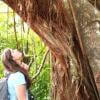
























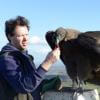

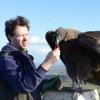

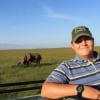












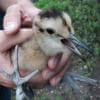








18 January 2019 7:21pm
Hello Erick
A few comments that you may find useful.
Before I start, I am not a complete Arduino beginner but I am certainly no expert either.
I quote British suppliers' websites below but you should find some local to you that offer the same components. If in doubt you can always try Mouser or Digikey (though mind the delivery charges for low value orders).
ARDUINO
1. SIZE - If you want to keep things small and do without a lot of the connectors etc. that come with the "standard" Arduino UNO then have a look at the ARDUINO PRO MINI. A postage stamp size unit with plenty of digital and analogue input/output as well as onboard voltage regulator to give you some flexibility on power supply.
Having said that, you already found out that by default Arduinos are not that energy efficient. But there is help at hand if you don' t mind getting a little more immersed in the electronics. See here for a very useful and detailed tutorial that worked a treat for one of my projects:
http://www.home-automation-community.com/arduino-low-power-how-to-run-atmega328p-for-a-year-on-coin-cell-battery/
2. OPERATING VOLTAGE AND CPU SPEED - There are Arduino Pro Mini versions operating at 3.3 or 5V, 8 or 16 MHz. Unless you need lots of processing power (unlikely from your description), then the 8 MHz version will do perfectly well. Pick the voltage version depending on the peripherals you are going to use. There are usually, but not always, 3.3 and 5V versions. SD card readers, for example, operate at 3.3V and those suited for a 5V Arduino have onboard level shifters to convert voltage levels.
http://www.hobbytronics.co.uk/index.php?route=product/search&keyword=arduino%20pro%20mini
3. SAVING ENERGY - I guess you don't need continuous measurements but just, say, once an hour. In so far, you could use slightly more energy-intensive measurement devices as they (and the Arduino) will only ever run for a few seconds at a time. On that note, you should be able to power all or at least some of the peripherals off output pins of the Arduino. They only supply a few 10mA but this is enough in most cases. Use two outpins per device, one set to LOW (for 0V) and one set to HIGH (for 3.3 or 5 V). Larger devices would have to be switched on and off through a transistor or even relay that is controlled by the Arduino.
REAL TIME CLOCK
Beware of some of the cheaper RTCs. I found to my detriment that, e.g. DS1302, does not keep time well at all to the point of being entirely useless. Better spend a few bob more and get something like the DS3234, which worked fine for me.
http://www.hobbytronics.co.uk/rtc-ds3234?keyword=rtc
MEASURING WATER FLOWS
If at all possible, measure contactless. As soon as you get your sensor anywhere near the actual stream, you are exposing it to all manner of potential trouble including debris getting washed onto it, clogging any mechanical sensor and possible upsetting most other "direct contact" sensors. Having said that, there don't seem to be all that many off-the-shelf options so here are some ideas off the top of my head.
Digikey sells the same sensors previously suggested from Adafruit but they also have a range of other "immersible" sensors that are lot cheaper:
https://www.digikey.com/products/en/sensors-transducers/optical-sensors-photointerrupters-slot-type-transistor-output/548?k=optical%20liquid%20sensor
A waterproof capacitive sensors may be an option but this would have to be helddown or burried on the stream bed:
https://www.ebay.com/itm/DC-5-24V-Contactless-Liquid-Level-Sensor-Switch-Non-Contact-Waterproof-Detector-/122834485435
An entirely different approach but definitely non-contact: use a small camera module and machine vision to detect the change of state between dry and wet. To do the processing of this on an Arduino would likely be a challenge, then again, what you are looking for is quite a simple change in visual appearance that may be possible to detect without too much processing.
POWER SUPPLY
If you are operating in the desert then I expect a small solar panel with battery should provide you all the power you need for such a small unit. I can't give you much more details on something custom-made but if you want to keep things simple then use an off-the-shelf device with a USB-style connector (get the 5V Arduino in this case). Better yet, use something that has something more robust than a USB port. If all else fails, use something like Sugru to beef-up the USB socket and plug against accidental damage and disconnection.
https://sugru.com/
Good luck and do have fun !!
J